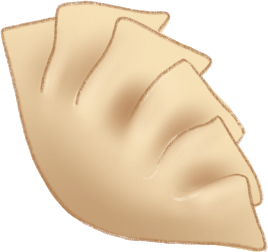
珠算文化知多少
Abacus Culutre



Abacus, also called a counting frame,is a calculating tool that was in use centuries before the adoption of the modern numeral written system.
While the first documentation of a Chinese abacus has been dated around the 14* century, some forms of the abacus or counting rods have appeared in history as early as 2,700 BC in ancient Samaria ( Sumar, 苏美尔). Mentioned in ancient Roman texts, as well as among Egyptian hieroglyphics( 象形文字),one example of archaeological evidence of the Roman abacus dates to the first century AD and Greek artifacts dated as early as 500 BC.
The abacus has survived the centuries with its purpose intact. Most often constructed of a wood frame with beads sliding on wire or wooden pegs, it is still widely used by merchants, traders and clerks in Asia,Africa, and elsewhere.


珠算文化知多少
Abacus Culutre

The Chinese abacus was created by a famous mathematician Cheng Dawei of the Ming Dynasty, known worldwide as “the great master of zhu suan”. In Japan, he is worshipped as “the God of Arithmetics”, and August 8th was established as the “abacus festival” in commemoration of him.
Known as the fifth great invention of ancient China, the abacus can perform addition, subtraction, division and multiplication; it can also be used to take square roots and cubic roots.


The Chinese abacus divides the frame with a horizontal bar. The area above the horizontal bar, heaven, contains two beads per vertical rod; each has a value of one. Each vertical rod represents a unit of ten. Calculating is accomplished by moving beads toward or away from the horizontal divider. In the mid-1800s, the 2/5 abacus was replaced by the 1/5 abacus, and, by the 1930s, the most widely used from of abacus was the Japanese-made soroban(日式算盘),1/4 abacus.


The abacus remains a teaching tool in China and elsewhere in Asia. It is provided to school children as a method of simple calculation. Blind students in particular find the abacus useful and more easily managed way to perform mathematics. Merchants and vendors in many locations throughout Asia also use the abacus to perform day-to-day sales and purchase calculations quickly and efficiently.






